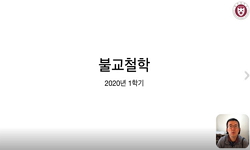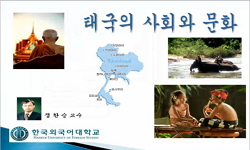본 논문은 비구니 구족계가 소멸했던 태국 상좌부(테라와다)불교에서 여성 출가자들이 다시 비구니계를 수지하게 되는 과정을 현재 상황을 중심으로 탐구한다. 먼저 태국 사회에서 오렌지(...
http://chineseinput.net/에서 pinyin(병음)방식으로 중국어를 변환할 수 있습니다.
변환된 중국어를 복사하여 사용하시면 됩니다.
- 中文 을 입력하시려면 zhongwen을 입력하시고 space를누르시면됩니다.
- 北京 을 입력하시려면 beijing을 입력하시고 space를 누르시면 됩니다.

Bhikkhunis in Thailand: Sangha, Society, and Situations(태국의 비구니: 승가, 사회, 상황) = Bhikkhunis in Thailand: Sangha, Society, and Situations
한글로보기https://www.riss.kr/link?id=A108243174
- 저자
- 발행기관
- 학술지명
- 권호사항
-
발행연도
2022
-
작성언어
English
-
주제어
Buddhist nuns ; Full ordination ; Bhikkhunis ; Theravada ; Buddhism ; Thailand 여승 ; 여성 출가자 ; 구족계 ; 비구니 ; 테라와다 ; 불교 ; 태국
-
KDC
220
-
등재정보
KCI등재후보
-
자료형태
학술저널
-
수록면
125-199(75쪽)
- DOI식별코드
- 제공처
- 소장기관
-
0
상세조회 -
0
다운로드
부가정보
국문 초록 (Abstract)
본 논문은 비구니 구족계가 소멸했던 태국 상좌부(테라와다)불교에서 여성 출가자들이 다시 비구니계를 수지하게 되는 과정을 현재 상황을 중심으로 탐구한다. 먼저 태국 사회에서 오렌지(또는 사프란)색 승복이 갖는 사회적 가치를 강조한 후에 여성 출가자들이 선택하고 있는 대안적 형태의 수계와 그것이 지니는 사회적 모호성을 살펴보겠다. 전통적으로 태국 여성들은 비구니 구족계를 받을 수 없으며, 태국 여성들이 처음으로 오렌지색 승복을 입으려고 시도한 것은 20세기부터이다. 담마난다 비구니는 태국에 상좌부 비구니가 등장하기까지 ‘세 번의 물결’이 있었다고 말한다. 본 논문은 현재의 물결에 특히 주목하여, ‘세 번의 물결’이 일어났던 상황들을 살펴보았다. 1928년과 1971년에 각각 첫 번째와 두 번째 물결이 있었고, 차츠마른 카빌(Chatsumarn Kabilsing)이 2001년에 사미니계 그리고 2003년에 구족계를 받아 담마난다 비구니가 되었을 때 그 세 번째 물결이 일어났다. 이를 계기로 현대의 비구니들이 존재하게 되었다.
본 논문은 비구니의 법적 사회적 지위, 일상 활동, 대중을 위한 임시 수계 프로그램, 사회 프로젝트 등 여성 사원의 실태와 활동을 전반적으로 살펴보면서 비구니들의 현재 상황을 검토해 보겠다. 현재 태국 전역에 최소 285명의 비구니와 사미니가 존재한다. 이들 대부분은 스리랑카에서 계를 받았다. 스스로 건립한 사원에서 생활하는 경향이 있지만, 일부는 다른 사찰이나 명상 센터에서 살기도 한다. 큰 규모의 비구니 사원으로는 1960년에 건립된 송담마칼리야니 사원(Songdhammakalyani Monastery)과 1995년에 건립된 니로다람(Niro-dharam)이 있다.
마지막으로, 비구니들은 국가가 허용하는 법적 지위를 얻을 가능성이 작지만, 그들의 사회적 지위는 지역 신도들에 의해서 보장된다는 점을 주장하겠다. 재가신도와 연결하는 다양한 방법이 있으며, 그중 소셜미디어는 매우 중요하다는 점을 밝히겠다.
다국어 초록 (Multilingual Abstract)
This article explores the development of Theravada bhikkhunis (fully ordained Buddhist nuns) in Thailand, focusing on current situations. It first presents alternative forms of female renunciants and their social ambiguity, emphasizing the social valu...
This article explores the development of Theravada bhikkhunis (fully ordained Buddhist nuns) in Thailand, focusing on current situations. It first presents alternative forms of female renunciants and their social ambiguity, emphasizing the social values of ordination in saffron robes in Thai society. Traditionally, full ordination as bhikkhunis is not available to Thai women, and it is only in the 20th century that Thai women first attempted to wear the saffron robes. According to Bhikkhuni Dhammananda, Theravada bhikkhuni emergence in the country can be viewed as ‘three waves’. This paper portrays the ‘three waves’ of the occurrence, paying particular attention to the current one. The first was in 1928, the second in 1971, and the third in 2001 and 2003, which led to the contemporary existence of bhikkhunis in Thailand with the ordination of Chatsumarn Kabilsingh as Samaneri and Bhikkhuni Dhamma-nanda.
The paper then examines the bhikkhunis’ current situations including an overview of monasteries and monastics, their legal and social status, daily activities, arrangement of temporary ordination for the public, and other social projects. Currently, there are at least 285 bhikkhunis and novices in Thailand in every region of the country. Most receive their ordination in Sri Lanka. They tend to stay in their own monasteries, and some stay in temples or meditation centres. Examples of established monasteries are Songdhammakalyani Monastery, founded in 1960, and Nirodharam, established in 1995.
Finally, the point is made that while the bhikkhunis are unlikely to gain legal status granted by the state, their social status is guaranteed by local followers. Also, among the various ways of reaching out to the laity, social media is vital.
목차 (Table of Contents)
- I. Introduction
- II. Social ambiguity of female renunciants in alternative forms and the importance of ordination in the saffron robes in Thai society
- III. History and the development of bhikkhunis in Thailand
- IV. Current situation of bhikkhunis in Thailand
- 1. Overview
- I. Introduction
- II. Social ambiguity of female renunciants in alternative forms and the importance of ordination in the saffron robes in Thai society
- III. History and the development of bhikkhunis in Thailand
- IV. Current situation of bhikkhunis in Thailand
- 1. Overview
- 2. Examples of established monasteries and their monastics
- 3. Daily activities and going on alms rounds
- 4. ‘Temporary’ samaneri ordination for the public
- 5. Other projects for society
- V. Conclusion
- Ⅰ. 들어가는 말
- Ⅱ. 태국 사회에서 대체 출가 형태 여성 출가자들의 사회적 모호성과 비구니 수계의 중요성
- Ⅲ. 태국 비구니의 역사와 발전
- Ⅳ. 태국 비구니의 현 상황
- 1. 개관
- 2. 사원과 지도자 비구니들
- 3. 일상 활동과 탁발 수행
- 4. 일반인을 위한 ‘임시’ 사미니 수계
- 5. 다른 사회적 프로젝트들
- Ⅴ. 맺는말
동일학술지(권/호) 다른 논문
-
- 대행선연구원
- 김응철
- 2022
- KCI등재후보
-
생활참선 수행도량, 한마음선원의 포교현황과 미래의 방향
- 대행선연구원
- 혜선
- 2022
- KCI등재후보
-
- 대행선연구원
- Gihani De Silva
- 2022
- KCI등재후보
-
- 대행선연구원
- Karma Lekshe Tsomo
- 2022
- KCI등재후보




 RISS
RISS







